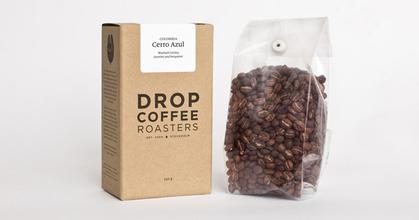Colonial Coffee Garden, a microcosm of cosmopolitanism

After the 17th century, the coffee tasted by Europeans is no longer Arabian coffee beans from the east.
When cafes quickly became popular in Europe, adventurous businessmen targeted the coffee trade, figuring out the huge profits behind growing and buying and selling coffee. The overseas pioneers of the old colonial empire, the East India Company and the West India Company, were the first to take action. They risked being sentenced to death by secretly smuggling coffee trees from their country of origin to Amsterdam. After being cultivated in a short greenhouse, they were soon transported by the company's ocean-going fleet to tropical colonies around the world for trial planting. As a result, Uruguay in South America had the highest production.
The French did not want to lag behind and got the coffee tree, but somehow they could not cultivate it, until the birthday ceremony of Louis XIV, the "Sun Emperor" in 1714, the mayor of Amsterdam presented a vibrant coffee tree to France. According to legend, one of the descendants of the tree was taken across the ocean to the French colony of Martinique in 1720, and the sailors' efforts to protect the tree at sea were legendary. In a short period of more than 50 years after that, the French colonies of Latin America overwhelmed all their competitors and became the largest coffee producer in the world. At that time, more than half of Europe's annual consumption of 65,000 tons of coffee came from there.
This is cosmopolitanism, and the coffee that Europeans are sure to drink is grown and transported from South America, far away, as if at hand. The bourgeois class, who participated in the development of overseas colonies to grow coffee, can't wait to step onto the stage of history, that is, they have become the most important regulars of cafes in the future. Cosmopolitanism is also the world outlook they believe in.
Important Notice :
前街咖啡 FrontStreet Coffee has moved to new addredd:
FrontStreet Coffee Address: 315,Donghua East Road,GuangZhou
Tel:020 38364473
- Prev

You shouldn't drink after drinking coffee.
In fact, if you want to tell whether it is wine or coffee, it only depends on what is the main body. If it is based on wine, coffee can be made into coffee wine by mixing distilled liquor with high alcohol content and strong coffee spices. For example, Mexican Coffee Wine, French Cordial or Italian Corretto, etc. Take coffee as the main body, add flavor enhancement
- Next

Common sense of Coffee Culture Cafe was banned
Modern people can drink coffee as much as they like, but there has been a rough ban on coffee in history. It is said that the world's first ban on cafes can be traced back to the holy place of Mecca in 1511. The rulers thought that the parties on the coffee shop table would threaten their authority and closed all the cafes in the city. As a result, the ban was repealed automatically because the Sultan fell in love with drinking coffee. At the beginning
Related
- Beginners will see the "Coffee pull flower" guide!
- What is the difference between ice blog purified milk and ordinary milk coffee?
- Why is the Philippines the largest producer of crops in Liberia?
- For coffee extraction, should the fine powder be retained?
- How does extracted espresso fill pressed powder? How much strength does it take to press the powder?
- How to make jasmine cold extract coffee? Is the jasmine + latte good?
- Will this little toy really make the coffee taste better? How does Lily Drip affect coffee extraction?
- Will the action of slapping the filter cup also affect coffee extraction?
- What's the difference between powder-to-water ratio and powder-to-liquid ratio?
- What is the Ethiopian local species? What does it have to do with Heirloom native species?

